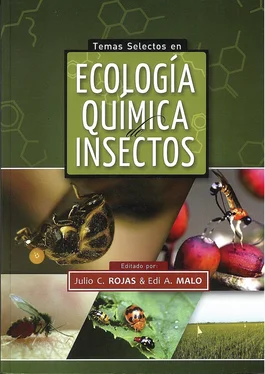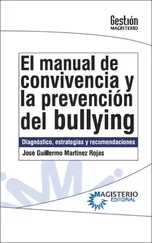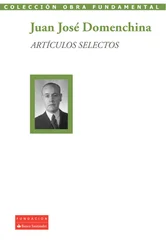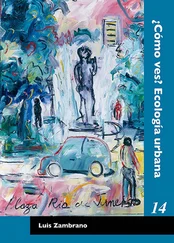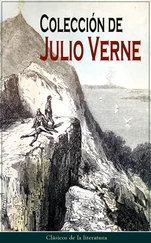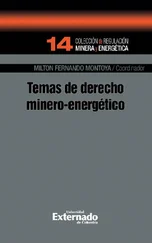JONES, W. D., CAYIRLIOGLU, P., GRUNWALD KADOW, I., & VOSSHALL, L. B. 2007. Two chemosensory receptors together mediate carbon dioxide detection in Drosophila . Nature 445: 86-90.
KAISSLING, K-E. 1971. Insect olfaction, pp. 351-431, en Beidler L. M. (ed.), Handbook of Sensory Physiology , Vol. IV; Chem. Senses. Springer-Verlag, Berlin.
KAISSLING, K-E. 1995. Single unit and electroantennogram recordings in insect olfactory organs, pp. 361- 386, en Spielman, A. I., & Brand, J. G. (eds.), Experimental Cell Biology of Taste and Olfaction: Current Techniques and Protocols . CRC Press, Boca Raton.
KAISSLING, K. 1998. Flux detectors versus concentration detectors: Two types of chemoreceptors. Chem. Senses 23: 99-111.
KAISSLING, K-E., HILDEBRAND, J. G., & TUMLINSON, J. H. 1989. Pheromone receptor cells en the male moth Manduca sexta . Arch. Insect. Biochem. Physiol. 10: 273-279.
KEIL, T. A. 1999. Morphology and development of the peripheral olfactory organs, pp. 6-44 en Hansson, B. S. (ed), Insectc Olfaction . Springer-Verlag, Berlin.
KENT, L. B., HARROW, I. D., QUARTARAO, P., & HILDEBRAND, J. G. 1986. An accessory olfactory pathway in Lepidoptera: the labial pit organ and its central projections in Manduca sexta and certain other sphinx and silk moths. Cell Tissue Res. 245:237-245.
KENT, L. B., WALDEN, K. K. O., & ROBERTSON, H. M. 2007. The Gr family of candidate gustatory and olfactory receptors in the yellow-fever mosquito Aedes aegypti. Chem. Senses 33: 79–93.
KLEINEIDAM, C., & TAUTZ, J. 1996. Perception of carbon dioxide and other “air condition” parameters in the leaf cutting and Atta cephalotes . Naturwissenschaften 83: 566-568.
KWON, J. Y., DAHANUKAR, A., WEISS, L. A., & CARLSON, J. R. 2007. The molecular basis of CO 2reception in Drosophila . Proc. Natl. Acad. Sci. USA 104: 3574-3578.
LEAL, W. S. 2005. Pheromone reception. Top. Curr. Chem. 240: 1–36.
LEI, H., & HANSSON, B. S. 1999. Central processing of pulsed pheromone signals by antennal lobe neurons in the male moth Agrotis segetum . J. Neurophysiol 81: 1113-1122.
LEI, H., CHRISTENSEN, T.A., & HILDEBRAND, J. G. 2002. Local inhibition modulates odor-evoked synchronization of glomerulus-specific output neurons. Nature Neurosc. 5: 557-565.
LEI, H., CHRISTENSEN, T. A., & HILDEBRAND, J. G. 2004. Spatial and temporal organization of ensemble representations for different odor classes in the moth antennal lobe. J. Neurosc. 24: 11108-11119.
LU, T., QIU, Y. T., WANG, G., KWON, J. Y., RUTZLER, M., KWON, H., PITTS, R. J., VAN LOON, J. J. A., TAKKEN W., CARLSON, J. R., & ZWIEBE, L. J. 2007. Odor coding in the maxillary palp of the malaria vector mosquito Anopheles gambia . Curr. Biol. 17: 1533–1544.
NIKONOV, A. A., & LEAL, W. S. 2002. Peripheral coding of sex pheromone and behavioral antagonist in the Japanese beetle, Popillia japonica . J. Chem. Ecol. 28: 1075-1089.
OCHIENG, S. A., HALLBERG, E., & HANSSON, B. S. 1998. Fine structure and distribution of antennal sensilla of the desert locust, Schistocerca gregaria (Orthoptera: Acrididae). Cell Tissue Res. 291:525-536.
OCHIENG, S. A., PARK, K.C., & BAKER, T. C. 2002. Host plant volatiles synergize responses of sex pheromone-specific olfactory receptor neurons in male Helicoverpa zea . J. Comp. Physiol. A 188: 325–33.
PAWLOWSKI, V. M., CHRISTENSEN, T. A., LEI, H., & HILDEBRAND, J. G. 2005. A primer on multichannel neural ensemble recording in insects, pp. 393-415, en Christenssen T. (ed.), Methods in Insect Sensory Neuroscience . CRC Press, Boca Raton.
PELLETIER, J., GUIDOLIN, A., SYED, Z., CORNEL, A. J., & LEAL, W. S. 2010. Knockdown of a mosquito odorant-binding protein involved in the sensitive detection of oviposition attractants. J. Chem. Ecol. 36:245–248.
PELOSI, P., ZHOU, J.-J., BAN, L. P., & CALVELLO M. 2006. Soluble proteins in insect chemical communication. Cell. Mol. Life Sci. 63: 1658–1676.
REDDY, G. V. P., & GUERRERO, A. 2004. Interactions of insect pheromones and plant semiochemicals. Trends Plant Sci . 9: 253-261.
REISENMAN C., DACKS A. & HILDEBRAND J. 2011. Local interneuron diversity in the primary olfactory center of the moth Manduca sexta . J. Comp. Physiol. A 197: 653-665.
SAKMANN, B., & NEHER E. 1995. Single-Channel Recording . Plenum Press, New York.
SATO, K., PELLEGRINO, M., NAKAGAWA, T., NAKAGAWA, T., VOSSHALL, L. B., & TOUHARA, K. 2008. Insect olfactory receptors are heteromeric ligand-gated ion channels. Nature 452: 1002-1007.
SCOTT. K., BRADY, R. JR., CRAVCHIK, A., MOROZOV, P., RZHETSKY, A., ZUKER, C., & AXEL, R. 2001. A chemosensory gene family encoding candidate gustatory and olfactory receptors in Drosophila . Cell 104: 661–673.
STOPFER, M., WEHR, M., MACLEOD, K., & LAURENT, G. 1999. Neural dynamics, oscillatory synchronisation, and odour codes, pp. 163-180, en Hansson, B. S. (ed.), Insect Olfaction . Springer- Verlag, Berlin.
SHEPHERD, G. M. 1985. Are there labeled lines in the olfactory pathway?, pp. 307-321, en Pfaff, D. W. (ed.), Taste, Olfaction, and the Central Nervous System . Rockefeller Press, New York.
SHIELDS, V., & HILDEBRAND, J. G. 2001. Responses of a population of antennal olfactory receptor cells in the female sphinx moth Manduca sexta to plant-associated volatile organic compounds. J. Comp. Physiol. A 186: 1135-1151.
SILBERING, A, RYTZ, R, GROSJEAN, Y, ABUIN, L, RAMDYA, P, JEFFERIS, G. S., & BENTON R. 2011. Complementary function and integrated wiring of the evolutionarily distinct Drosophila olfactory subsystems. J. Neurosci. 31: 13357-13375
STANGE, G., & STOWE, S. 1999. Carbon-dioxide sensing structures in terrestrial arthropods. Microsc. Res. Tech. 47: 416–427.
STENGL, M., ZIEGELBERGER, G., BOEKHOFF, I., & KRIEGER J. 1999. Perireceptor events and transduction mechanisms in insect olfaction, pp. 49-66 en Hansson, B. S. (ed), Insect Olfaction . Springer-Verlag, Berlin.
SUH, G. S. B., WONG, A. M., HERGARDEN, A. C., WANG, J. W., & SIMON, A. F. 2004. A single population of olfactory sensory neurons mediates an innate avoidance behaviour in Drosophila . Nature 431: 854–59.
THOM, C, GUERENSTEIN, P. G., MECHABER, W. L., & HILDEBRAND, J. G. 2004. Floral CO 2cues reveal flower profitability to moths. J. Chem. Ecol. 30: 1285–88.
TODD, J. L., & BAKER, T. C. 1999. Function of peripheral olfactory organs, pp. 67-96, en Hansson, B. S. (ed.), Insect Olfaction . Springer-Verlag, Berlin.
VICKERS, N. J., & BAKER T. C. 1994. Reiterative responses to single strands of odor promote sustained upwind flight and odor source location by moths. Proc. Natl. Acad. Sci. USA 91: 5756-5760.
VOGT, R. G., & RIDDIFORD, L. M. 1981. Pheromone binding and inactivation by moth antennae. Nature 293: 161–163.
VOSSHALL, L., AMREIN, H., MOROZOV, P., RZHETSKY, A., & AXEL R. 1999. A spatial map of olfactory receptor expression in the Drosophila antenna. Cell 96: 725–736.
WICHER, D., SCHÄFER, R., BAUERNFEIND, R., STENSMYR, M. C., HELLER, R., HEINEMANN, S. H., & HANSSON, B. S. 2008. Drosophila odorant receptors are both ligand-gated and cyclic-nucleotide- activated cation channels. Nature 452: 1007-1012.
YAO, C. A., IGNELL, R., & CARLSON, J. R. 2005. Chemosensory coding by neurons in the coeloconic sensilla of the Drosophila antenna. J. Neurosci. 25: 8359–8367.
Читать дальше
